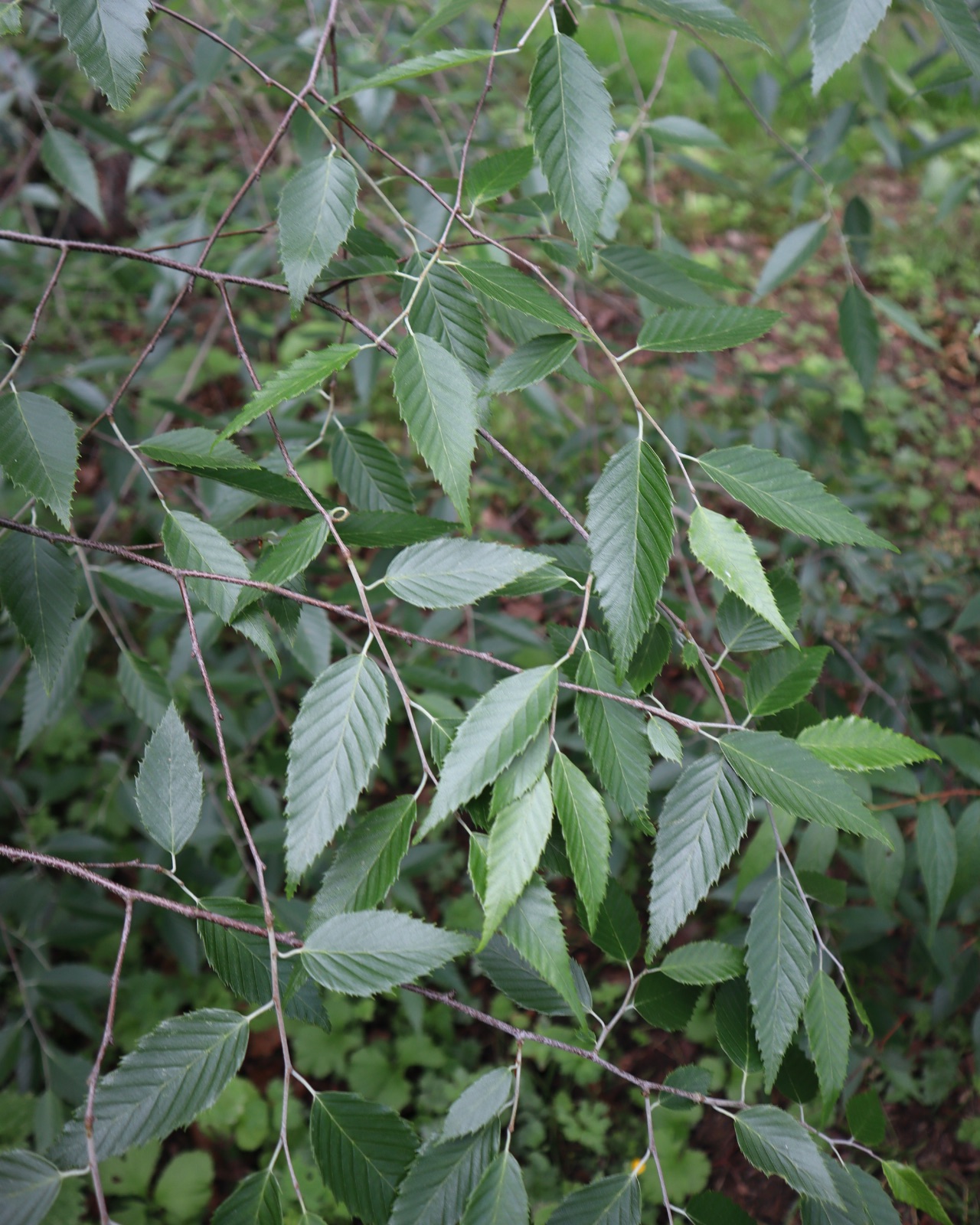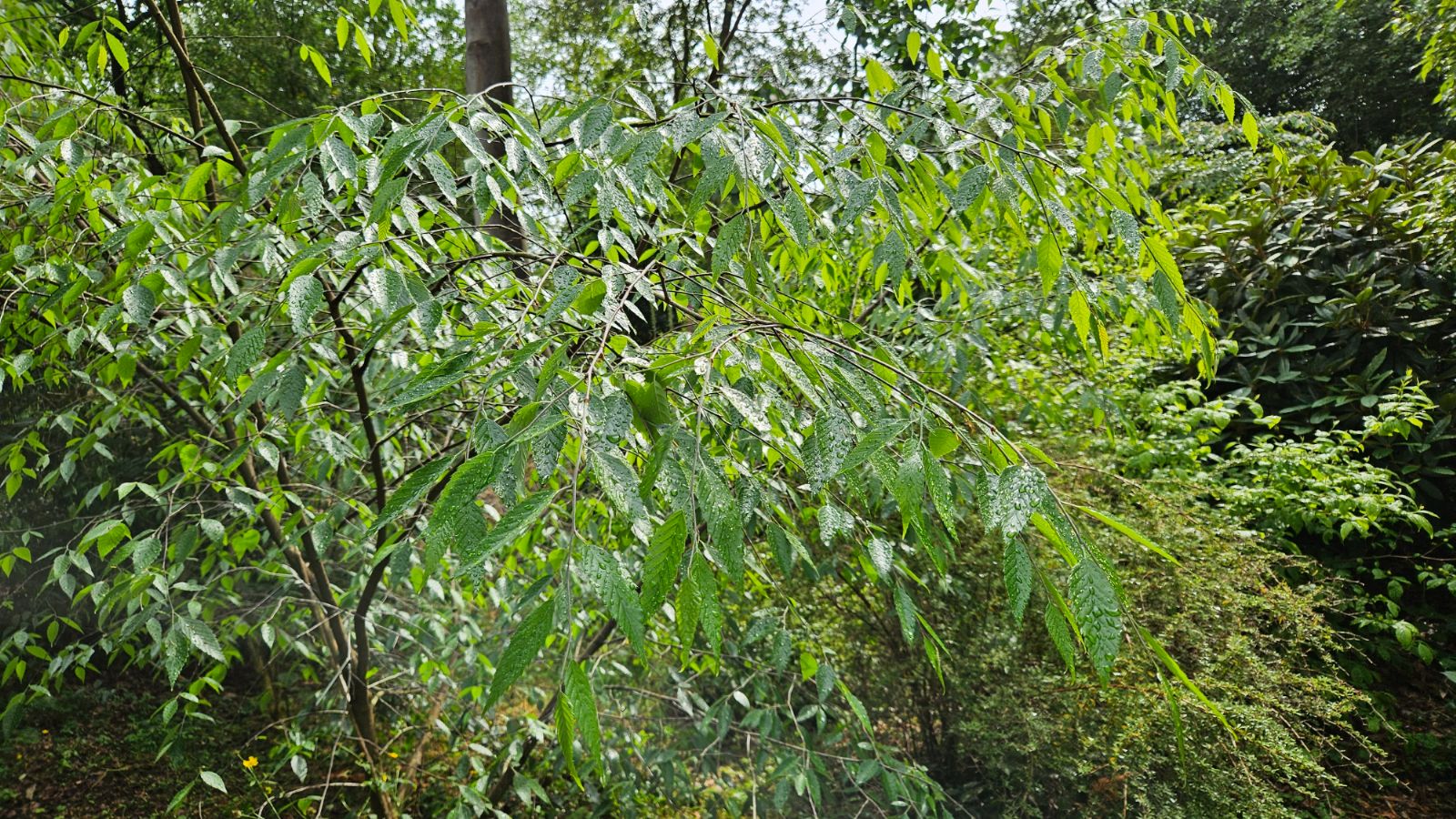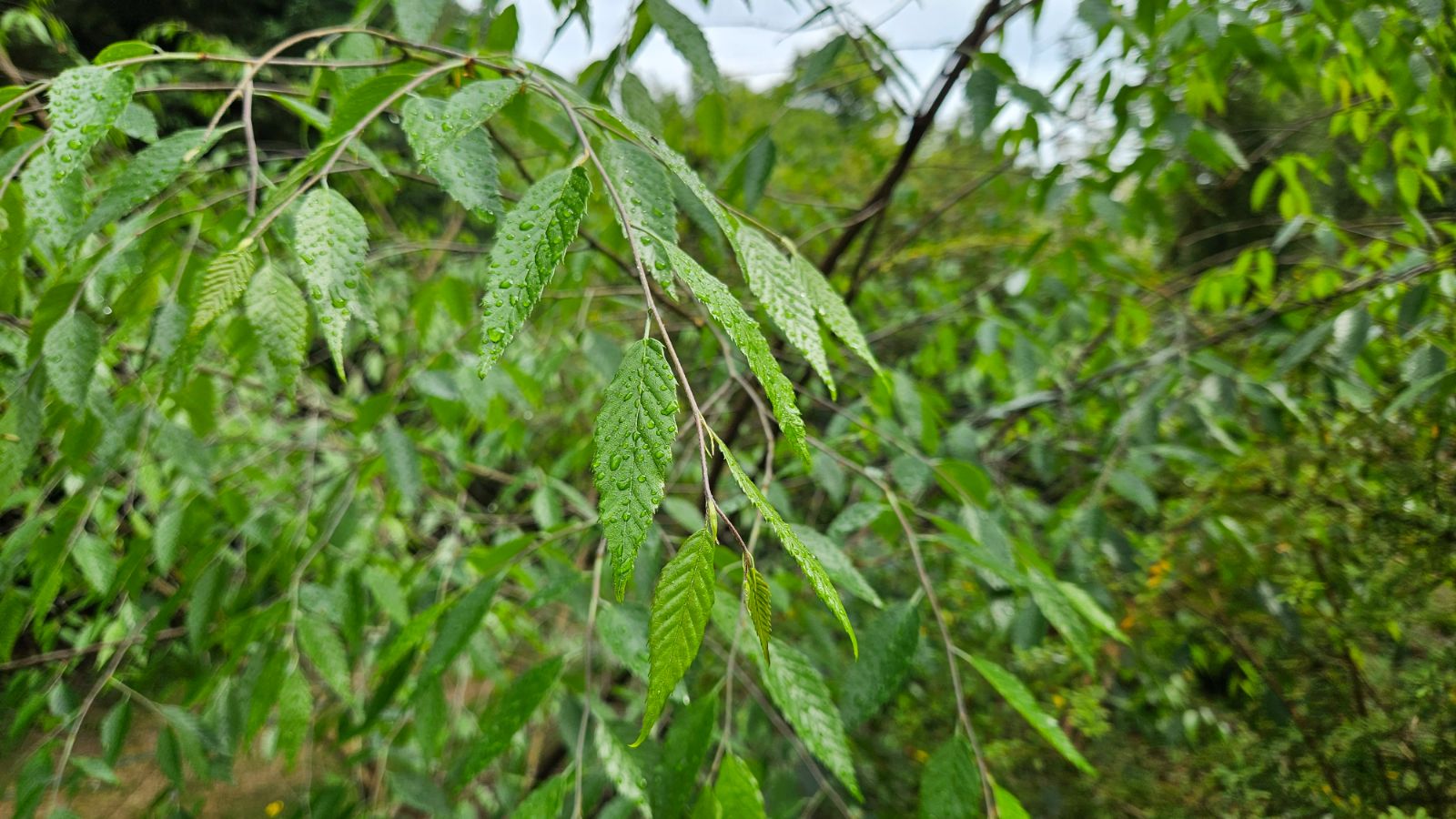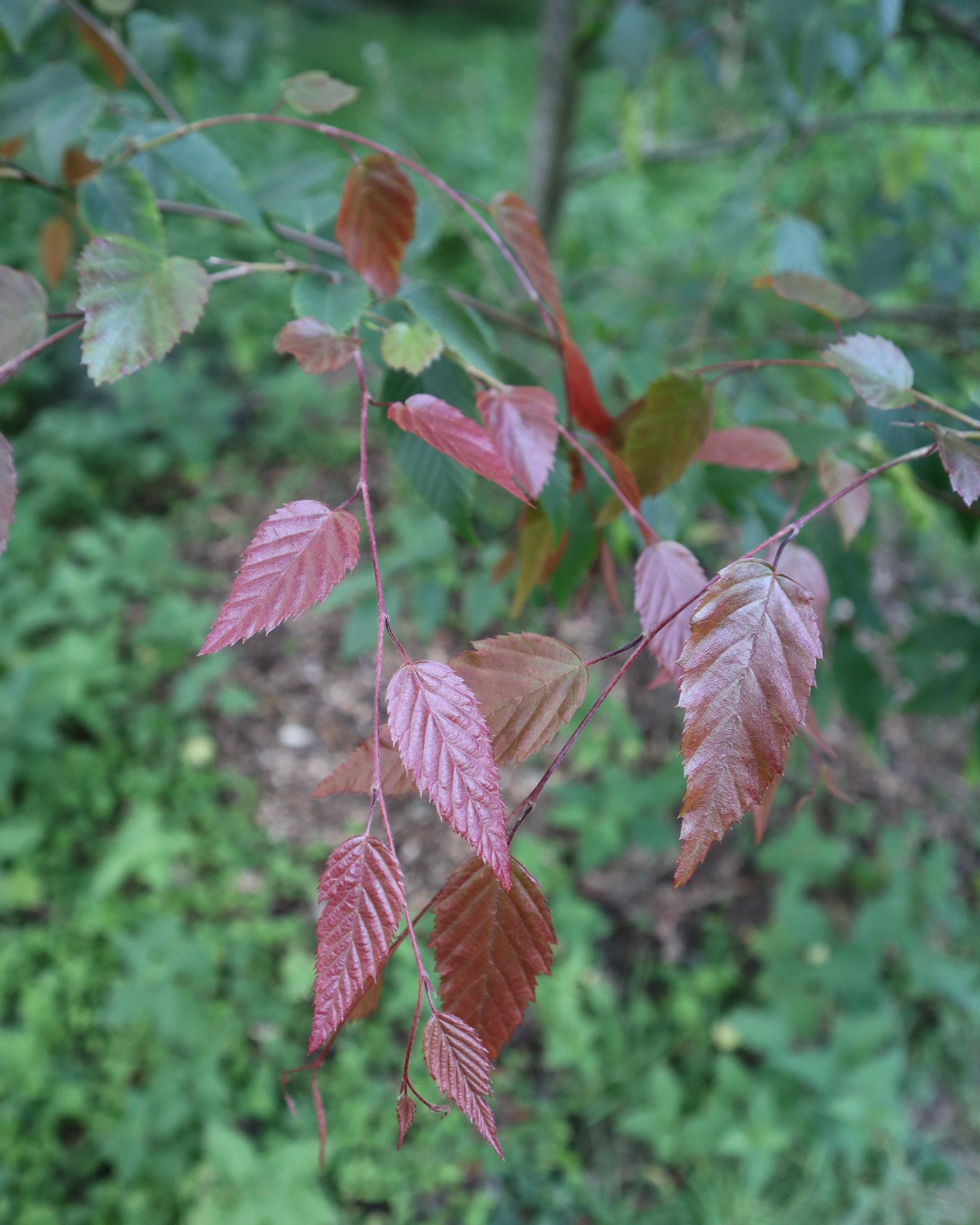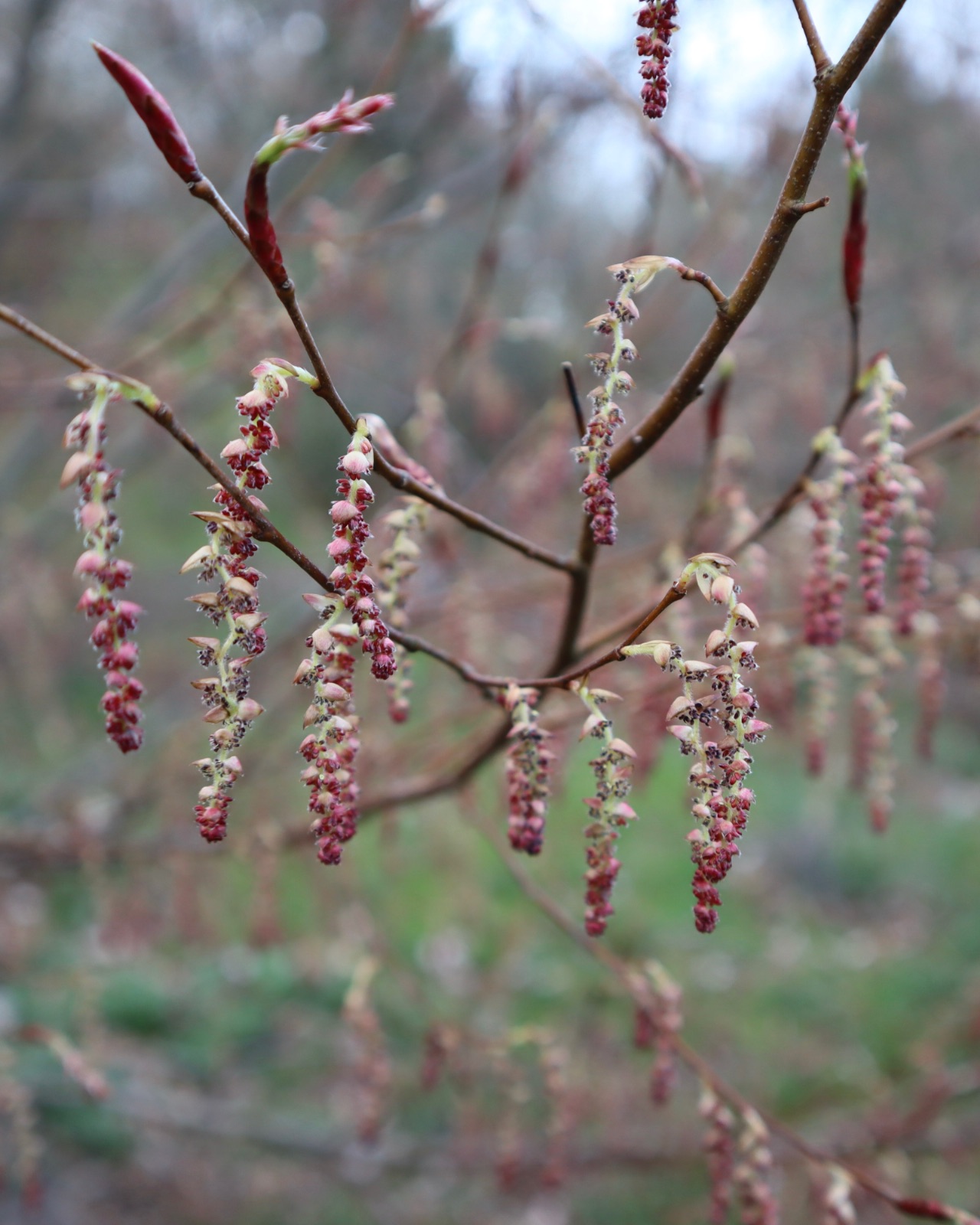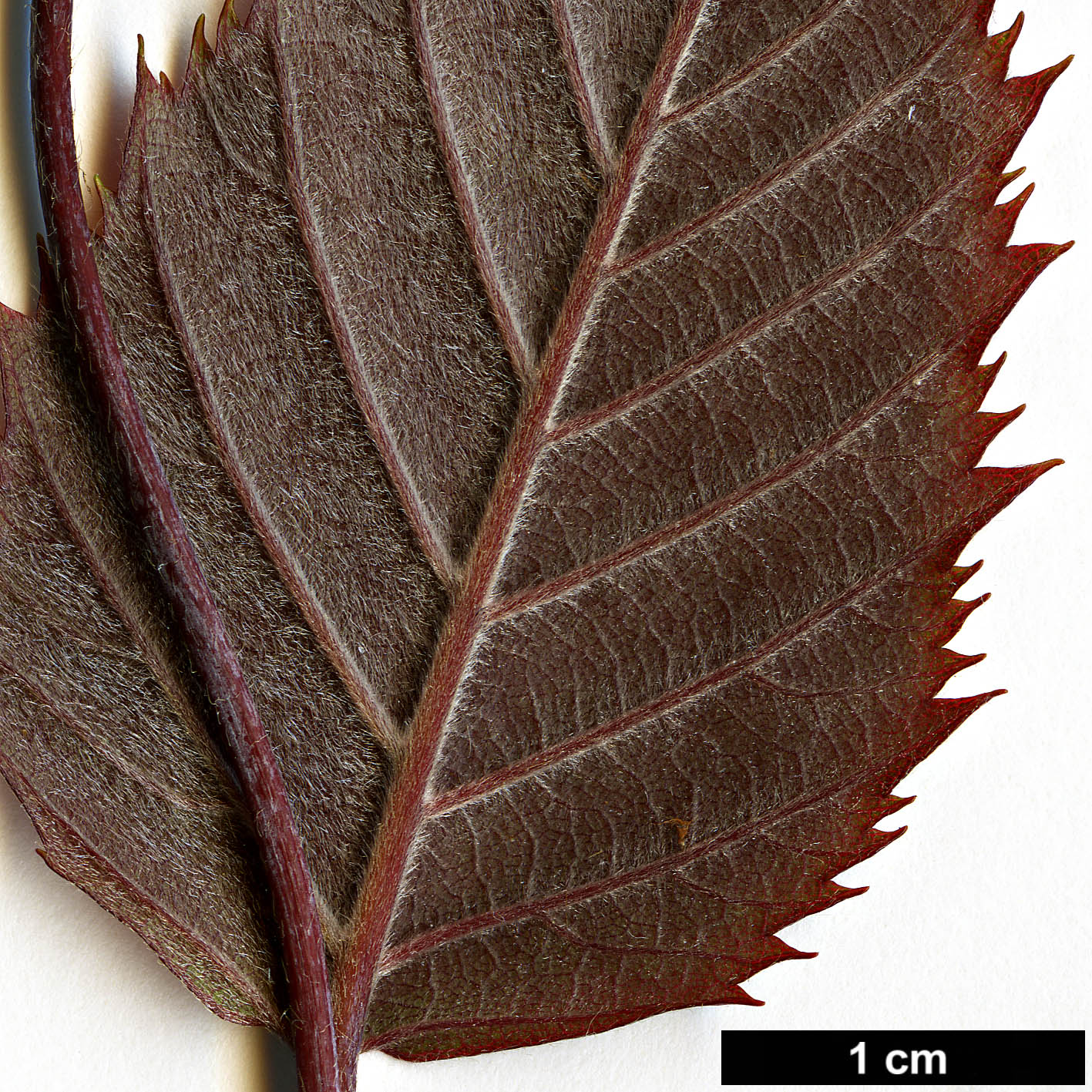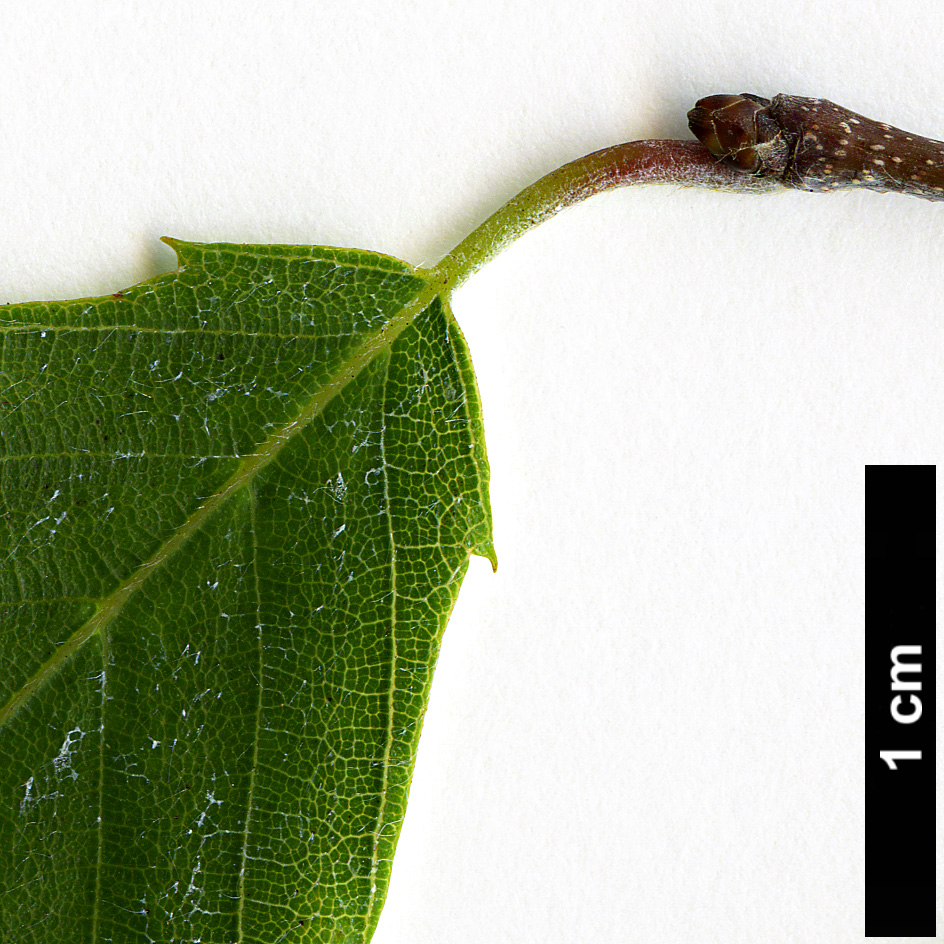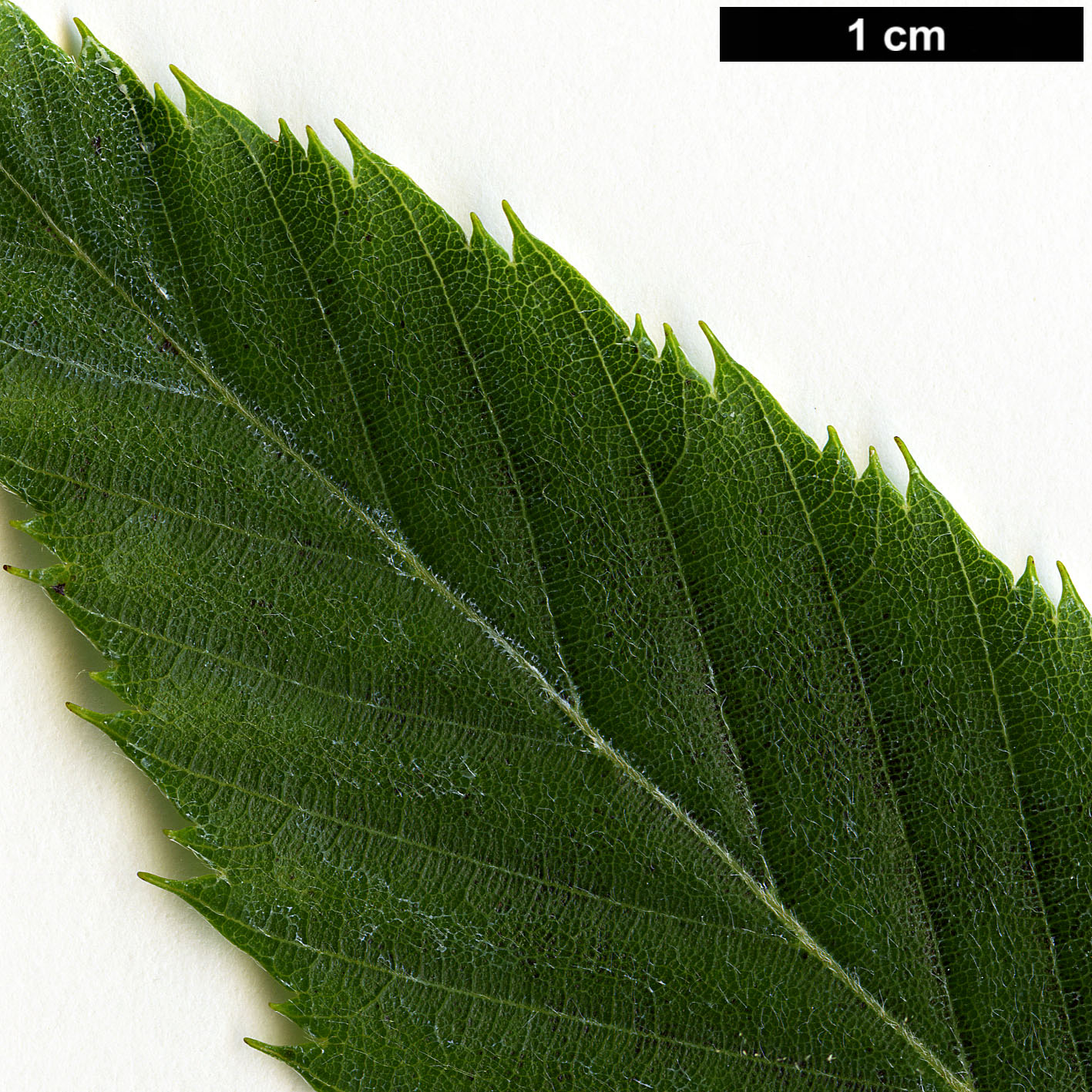Carpinus omeiensis
Sponsor
Kindly sponsored by
Lord and Lady Aldington
Credits
Owen Johnson (2022)
Recommended citation
Johnson, O. (2022), 'Carpinus omeiensis' from the website Trees and Shrubs Online (treesandshrubsonline.
Genus
Common Names
- Mount Omei Hornbeam
Other taxa in genus
- Carpinus betulus
- Carpinus caroliniana
- Carpinus cordata
- Carpinus faginea
- Carpinus fangiana
- Carpinus fargesiana
- Carpinus hebestroma
- Carpinus henryana
- Carpinus japonica
- Carpinus kawakamii
- Carpinus laxiflora
- Carpinus londoniana
- Carpinus mollicoma
- Carpinus monbeigiana
- Carpinus orientalis
- Carpinus polyneura
- Carpinus pubescens
- Carpinus rankanensis
- Carpinus × schuschaensis
- Carpinus shensiensis
- Carpinus tropicalis
- Carpinus tschonoskii
- Carpinus turczaninovii
- Carpinus viminea
Tree to 7 m. Bark grey, rather smooth. Twigs dark brown, becoming glabrous. Leaves elliptic to ovate, 6–8 × 2.5–3.5 cm; apex long-pointed, with appressed silky hairs underneath and tufts under the vein axils, flushing reddish; lateral veins in 12–16 parallel pairs, impressed; margin with usually single, rather distant, mucronate teeth; petiole 5–8 mm, occasionally longer, with a variably dense yellow pubescence. Fruiting catkins 6–8 cm long; peduncle 2–3 cm, with dense silky hairs at first. Bracts narrowly D-shaped, c. 15 mm long, the curved side remotely dentate and the straight side entire except for a small auricle at the base that clasps the nutlet. Nutlet densely hairy and prominently ribbed. (Li & Skvortsov 1999).
Distribution China Guizhou (Dejiang Xian), Sichuan (Emei Shan, Junlian Xian)
Habitat Mountain forests, 1000–1900 m asl.
USDA Hardiness Zone 7
RHS Hardiness Rating H6
Conservation status Data deficient (DD)
This is a taxon of relatively recent discovery – described in 1964 – which provides a good example of the way in which Carpinus appears to be speciating within different, isolated mountain habitats in China. In this case, the nearest allies are Carpinus mollicoma, C. rupestris A. Camus (a southern Chinese plant which does not seem to be in cultivation in the west) and C. polyneura; the last of these taxa has the widest wild distribution and was the first of the group to be named, in 1899. One recent phylogenetic study (Dong et al. 2022) has suggested that this group is too closely related for DNA analysis to be a useful tool, as yet, in separating its various constituent parts. C. omeiensis itself has a restricted distribution, and could be a threatened entity (Shaw et al. 2014); it is distinct in the usually simple and relatively distant teeth around its leaves, which have rather fewer side-veins than its close allies, although plants in cultivation tend to have more double teeth and longer petioles than is described in the wild population. As in many hornbeams, these veins are impressed, creating a pretty pleated effect, and the leaves flush coppery red in spring.
The best documented introduction of Carpinus omeiensis to the west was made by Keith Rushforth in 1985 (KR 280), on the Emei Shan in Sichuan after which the species is named. This collection grows rather slowly into a bushy plant – it had reached 4 m in Rushforth’s woodland arboretum in Devon by 2013 (Tree Register 2022) – and represents one of varied Asiatic hornbeam populations in which the reddish anthocyanins that protect the young foliage from intense insolation persist underneath the leaf through summer, at least in juvenile plants (Rushforth 1985). Grafts from KR 280 grow at Kew at at Wynkcoombe Hill in West Sussex (Tree Register 2022), and have also been sold by Pan-Global Plants (Pan-Global Plants 2021): this is the first example of a hornbeam with persistently red underleaves to become commercially available.
Carpinus omeiensis is also offered, in the UK, by Larch Cottage Plants and Bluebell Arboretum and Nursery (Royal Horticultural Society 2022), and by European nurseries including Pépinière AOBA (Pépinière AOBA 2022). However, many of these trees differ markedly from the species’ description in the Flora of China (Li & Skvortsov 1999; De Langhe 2022), having long, slender petioles, markedly double leaf-toothing and as many as 18 pairs of lateral veins; they are perhaps better placed within C. polyneura. But they are exceptionally graceful trees, even for a hornbeam, and an uncertainty surrounding their identity should not be felt to detract from their garden merit.
In the United States, examples (of whatever provenance) include a 7 m tree at the J.C. Raulston Arboretum in North Carolina, planted in 2001 and clearly enjoying the region’s longer and more continental summers (J.C. Raulston Arboretum 2022), and one at the Bartlett Arboretum in South Carolina, purchased from Pan-Global Plants in 2015 (Royal Botanic Garden Edinburgh 2022).

